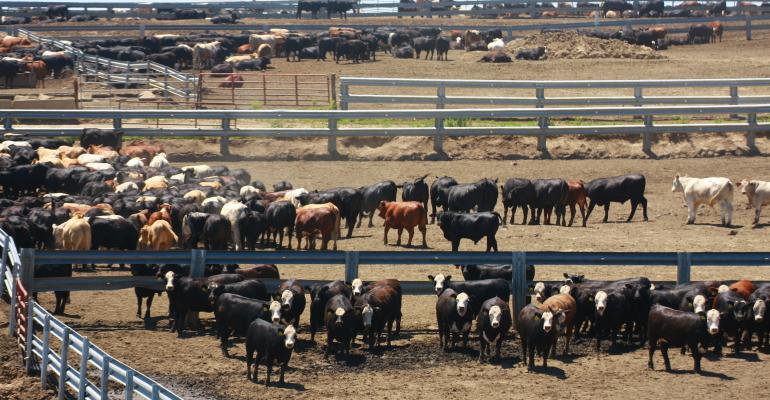Blended beef cutout rises to highest level since last June.
January 29, 2019

Beef: A light to moderate amount of cash cattle trade began to develop late last Friday morning in the North at $122-123/cwt. on a live basis, down $1-2/cwt. from last week. Dressed trade was steady at $197. Trade in the South began in the afternoon at mostly $123, down $1 from last week. Unless there are influences from severe winter weather, some further modest weakening is expected in the next few weeks. Weekly average cutout values increased by more than $4 this week, with the blended cutout getting up to the highest level since last June and about $10 higher than at this time last year. Strength showed across all of the major primals. Spot market sales volumes slowed considerably, particularly on the end meats. Weaker beef demand in February could lead to pressure on cutout values in the next few weeks. Cattle harvest continued to moderate this week, with the total estimated at 610,000 head. This was 10,000 head below last week but 16,000 head above last year.
Pork: The first three weeks of January saw strong harvest levels, averaging 6.25% over the prior year. Per the most recent U.S. Department of Agriculture survey data, available hogs for January only were up 3.5%. While the difference between the two scenarios is just over 200,000 animals, the question arises about animal weights and how much packers are pulling forward on available hogs. By looking at the animal weight trend for the same three-week span, weights moved identically to the prior year and acceptably close to the traditional movement. From the looks of animal weights, it is possible that they pulled on hogs slightly for one week, but that effect appears to have reversed somewhat last week. Animal weights were neutral from the previous week but pulled just as many hogs. The discussion for now is expected to be short lived as harvest levels are already showing signs of tapering off from the strong increase.
Poultry: Over the past two years, lackluster demand has been both evolutionary and detrimental to whole turkey disappearance during the holiday time frame. Waning demand is expected to play an integral part in both producer- and consumer-facing decisions again in 2019. IEG Vantage is projecting frozen wholesale prices to again remain dampened in 2019, which will encourage disappearance. However, beginning stocks, as opposed to remaining flat like they did in 2018, are expected to remain constrained. This, combined with what is expected to be limited production growth in 2019, favors optimism for a return to an incentive for booking early. IEG Vantage is projecting frozen whole hens at an average of 94 cents/lb. during October, up 12 cents/lb. compared with January’s projected average. These price projections provide 12.5% inflation for frozen hen prices compared with the prior year. However, the January average is expected to be up less than 4% compared with the year before, further encouraging early bookings.
For a more detailed look at the weekly forecasts for the various meat sectors and meat cuts, subscribe to the "Meat Price Outlook." Contact Susan Dahlgren at [email protected] for more information
You May Also Like


.png?width=300&auto=webp&quality=80&disable=upscale)
